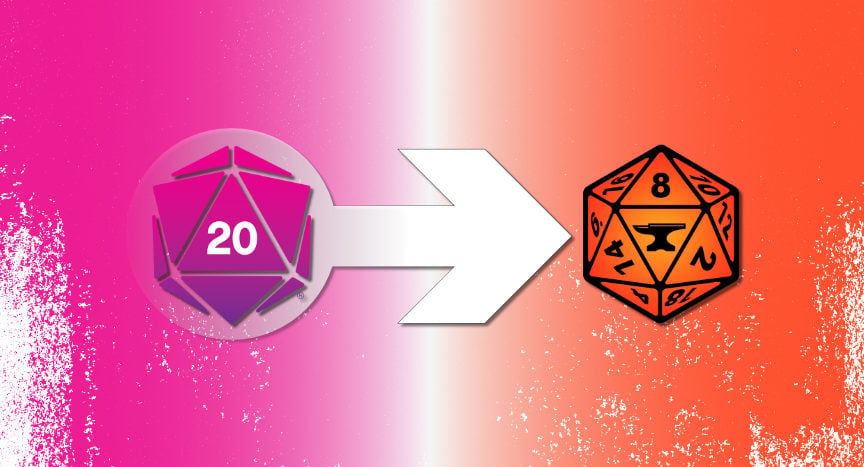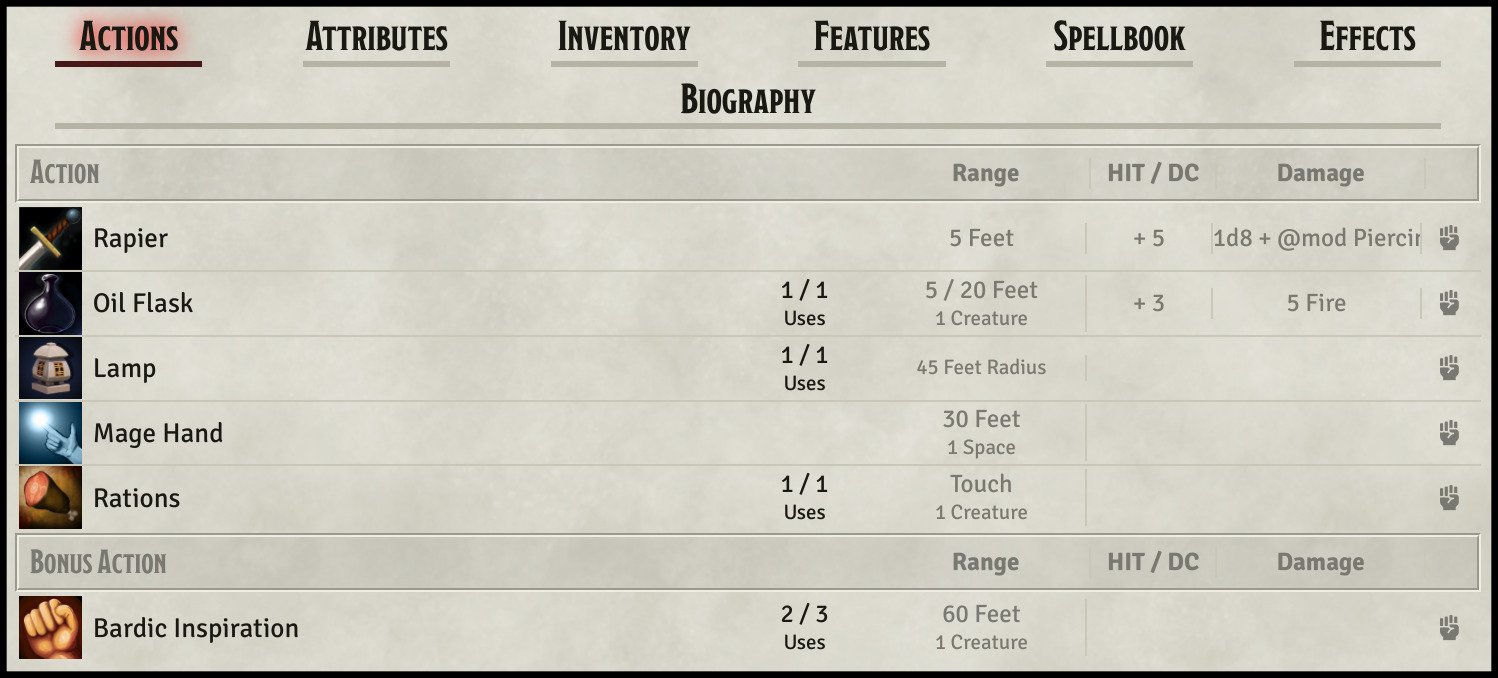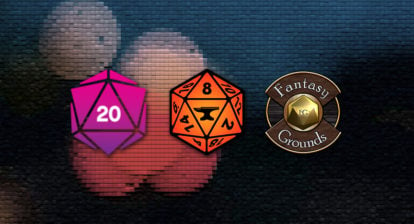First and foremost – welcome to the Foundry family. It really is a great community!
There are many of us that have come from other VTT’s for various reasons. Myself, I recently moved from Roll20 and I was blown away by the possibilities. However, there were a bunch of things that my players and I were used to in Roll20 and to make the transition easier, I wanted the ability to replicate some of those things. This led me to searching the various forums, Discord, Reddit and Facebook to find the answers. The answer was always Module “ABC” does that.
Hopefully this provides some answers to “In Roll20 I was able to do XYZ, how do I do that in Foundry?”
Now I want to state that the modules that I list below are my personnel preference, and by no means you have to do it this way. I also recommend adding them 1 at a time, so you understand what each one does, otherwise you can quickly get lost in settings and trying to work out why certain things are happening. You can set up a test world to try the modules out it in if you prefer. It is very easy to turn them on and off.
I do use many more, but the ones listed below are functions that not in core Foundry, but I could do in Roll20 core with dynamic lighting enabled. This excludes the API options that were available Roll20 and any combat automation as I consider that a more advanced article and one that others would be far better positioned to write on then me.
TL;DR: Anywho, here is the list… Let me know in the comments if you think I missed some crucial ones!
How do I…
…pop out sheets?
PopOut! allows you to pop out actor sheets, journals and other windows to a new tab or even new browser window.
…send pings from my cursor location?
Pings allows you to show a visual indicator where your cursor is on the canvas by holding down left click and if you want to even move the camera there.
…see who has permission to see what?
Permission Viewer shows colored shapes next to entities in your sidebar that allow you to quickly see and edit the permissions for each item, actor, journal, etc.
…make notes only the GM can see?
GM Notes provides an extra tab to each entity window (like items and journals) that opens an area to add notes that only the GM can see.
…roll dice without typing in chat?
Dice Tray expands your chat window with additional controls to quickly select which type and the amount of dice you want to roll.
…move multiple wall end points at once?
Multi Wall Point Mover lets you as the name suggests multiple end points of walls together, otherwise each wall segment is its own entity.
…improve the organization of the compendiums?
Compendium Folders improves the organizations with the ability to add folders to them.
…get my sweet virtual 3D dice?
Dice So Nice! not only implements 3D dice but gives you also extensive options for customization like colors, textures and even special effects.
…improve the drawing tools?
The Furnace improves on the core drawing tools and comes with other neat features like enable/disable Token vision for yourself (kinda like CTRL+L) and more.
…get free music assets?
Tabletop RPG Music and Michael Ghelfi Audio Pack. There are many free music modules, these are just two of the ones I use.
The following are D&D 5e specific:
…automatically roll for advantage/disadvantage (5e)?
Better Rolls 5e has the ability to do that. It replaces the built in rolling system for D&D5e to allow for compounded rolls.
…provide custom conditions (5e)?
Combat Utility Belt helps you to customize your conditions along with a other features that help automate things.
…get a better overview for my character actions (5e)?
Character Actions List DND5e adds a tab on the character sheet that shows available actions with modifiers shown in text.
…add additional resources to track (5e)?
5e-Sheet Resources Plus provides additional resource boxes that can get reset on long/short rest.
…get better character sheets (5e)?
Tidy5e Sheet is a nicer 5e character sheet. There are however a bunch of different ones. (you can assign different character sheets to different players)
…create magic items (5e)?
Magic Items lets you edit your items to add spells and features to them which the actor will inherit.
The Magical Converter
Firstly, if you have an existing game or adventure on Roll20, homebrew or otherwise, you can bring it across to Foundry. There is a converter by the clever Kakaroto, (the guy that wrote the Beyond20 browser extension for those of you that use that) that will bring across all of your Tokens, Journal Entries, Maps with walls and lighting, Rollable tables and music. It will also bring over character sheets, but only for 5e games.
Note
Macros also come across, but they don’t work due to Foundry’s macros being written in JavaScript.
You will need to sign up to his Patreon account to gain access, and this can be found here. His team are great at answering questions on his Discord if you head over there. I can speak from personal experience that it works wonders.
Couple of other points / helpful hints:
- By default, the cursors of all players and GM are shown to everyone as little dots that fly around the screen. I would recommend that you at least turn off the GM pointer in the settings page so that your players don’t see your cursor moving around a hidden trap area.
- Some of the modules add extra options in the “Configure Settings” page, others extra compendiums, some extra icons in the tool bar on the left and some just magically provide the extra features. If can take a little getting used to where the information is stored. The information in the project URL often describes this well with examples, but sometimes its just a matter of hunting around for it.
- In Roll20 there was no custom compendiums, so you had to keep everything in your Journal. In Foundry, try to only keep your items and journal entries that you are going to use in the immediate future in the listing. Everything else should be kept in a custom compendium. This will keep loading times to a minimum.
When in doubt ask questions in your preferred forum, someone will be able to provide you an answer – often before you have a chance to blink.
Happy Gaming 🙂
Full disclosure: I have no arrangement nor do work for Foundry, Kakaroto, Foundry Hub or any of the Module creators. Just a happy gaming fan trying to spread the fun.







One of my sheet modules was created to help ease the transition for players:
https://www.foundryvtt-hub.com/package/5e-ogl-character-sheet/
I would caution anyone reading this that they should not install all of these at once, instead play around and see which pain point you actually want to solve for your group. Its very easy to end up breaking things when you install a lot of high-touch modules (e.g. Better Rolls, Magic Items, Furnace).
Hi Elf Friend, sorry I wasnt aware of that one. I agree, your layout of your sheet definitely looks similar to Roll20’s and I would have included that in the list as well.
I agree with adding Modules 1 at a time so that you understand what each module does before moving on to the next, otherwise you may end up not knowing what each setting change does (and if you really need it)
The more modules you add, the more it increases the chances of instability, but I use all of the ones listed above (and a number of others) and havnt had any issues….yet…..
Many players coming from Roll20 ask if there is an option to draw the fog of war manually like in Roll20. That’s why I wrote the SimpleFog module that allows just that, drawing manual fog of war over the map. It can be used instead of, or in combination with, the core Foundry dynamic vision system, and you can choose to enable or disable it on a specific scene at any time. Here’s a great demonstration video that Matt from Encounter Library was kind enough to make.
https://www.foundryvtt-hub.com/package/simplefog/
Another great addition to the list.
And another fantastic Encounter Library video.
First off, Mushie great article and content, VERY much appreciated.
I would add the following
Great article, thanks for sharing!
Show Art is another good one – Adds the Shift+Z shortcut to show token art.
I will try and update this article after Foundry upgrades to 0.8.6, but I wanted to quickly point out that the “Furnace” module is no longer being supported and will not work in 0.8.x.
Some of the features are being moved into Core foundry, but the main one that I used it for – turn token vision off for the GM, is now in ‘Less Fog” and double click to change the initiative is now in “Initiative Double Click“.
The other feature that is used by some which is to “Split Journal” which to split a current journal in to a number of smaller journals, also this “DFreds Droppables” allows draging a folder of tokens onto the map at the same time (I havnt tested these last 2).